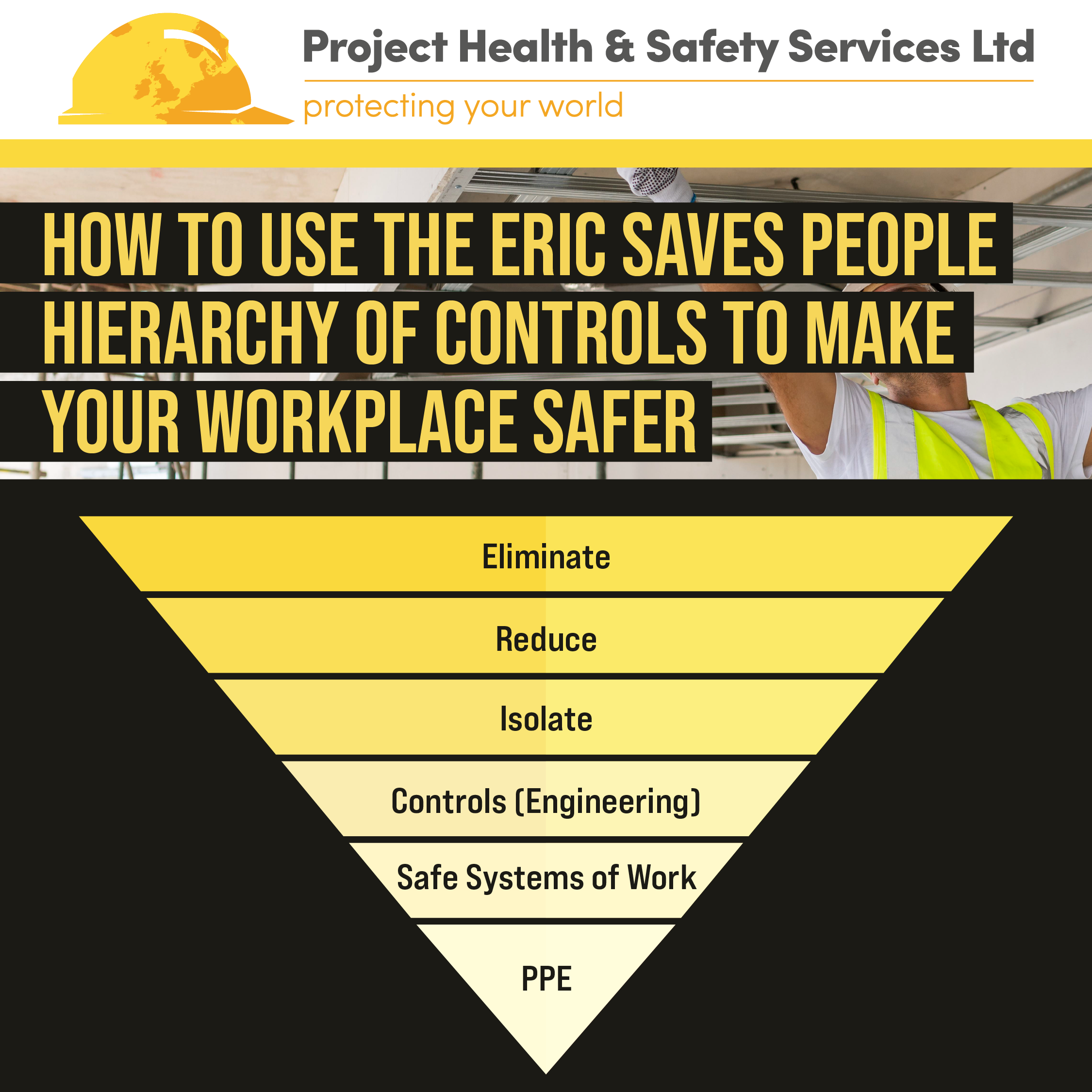Did your 2023 New Years’ resolution include to improve the health and safety of your business? Are you unsure of where to begin? PHSS is here to help!
ERIC SP Hierarchy of control
Let’s take a look at the best ways to control hazards and risks in your workplace to help keep your employees happy, healthy and safe. You may have heard of the ERIC Saves People Hierarchy of Control before. This is a simple 6 stage hierarchy, based on the HSE’s principles of prevention, that puts in place some of the key legal requirements to make workplaces safe for all! This is done by eliminating, reducing, and isolating risks, implementing controls and safe systems, and through the use of personal protective equipment. If these controls are implemented, in the correct order this will go a long way to making your workplace as safe as it can be. Let’s investigate the ERIC SP hierarchy of control further and see what you can do in your workplace to make it safer!

Eliminate
The first step in the hierarchy is to eliminate the risk wherever possible. However, this should not be used as an excuse not to complete a task. Instead, the risk should be eliminated from the task so it may still be performed. For example, if there is a risk of trips and falls from trailing cables, you could provide more power sockets so less cables are required. Remember, you need to check that you have not introduced other potential risks and hazards.
Reduce
One way you can reduce risk is by substituting it. You may not be able to fully eliminate risk completely, but you might be able to change the risk so it’s less harmful. For instance, you could pre-fabricate elements at ground level to reduce work at height, or you could swap a harmful chemical out for a less harmful one, or you could reduce the voltage of electrical equipment.
Isolate
Much as many of us experienced during the Covid-19 pandemic, a risk might need to be isolated to keep people safe. This could involve putting guards on machinery to prevent injury, or fencing off an area to keep people away from dangerous areas.
Controls
Controls can be engineering-, organisational- or procedural-based. For instance, installing a ventilation system to control dust in the workplace would be an engineering-based control, whereas managing the time spent exposed to a risk would be an organisational/procedural based control.
Safe Systems of Work
Another step you can take towards making your workplace as safe as it can be, is through developing and implementing Safe Systems of Work. This defines and communicates the safest way to carry out a task and can include method statements, risk assessments, lift plans and Permits-To-Work where necessary. By having these systems in place, we can help to ensure that where work has to be carried out, it can be carried out in as safe a manner as possible!
Personal Protective Equipment
Finally, employees that are exposed to hazards and risks at work which cannot otherwise be controlled should wear personal protective equipment. This could be a hard hat to stay safe from falling debris, or safety goggles to protect your eyes from ejected particles. Please remember, PPE is the very last line of defence and should only be implemented once the previous 5 stages have been exhausted. PPE does not prevent an accident from happening, and largely relies on the user wearing it properly.
The ERIC SP hierarchy of control is a funnel-based model, meaning that the first step, Elimination, is the most effective change you can make for your safety, whereas PPE is the least effective measure out of these options. That’s because the controls at the top end of the hierarchy rely less on individual effort than the controls at the bottom. It is also important to remember that any control you implement should be reasonably practicable, meaning that you can balance the costs, time, effort and inconvenience of implementing a control against the risk reduction benefit gained from it. If the risk reduction benefit is not worth the cost, time effort or inconvenience, then you can reconsider.
At the end of the day, we all want to make sure we’re doing what we can to keep our employees and anyone else we interact with safe. By implementing this hierarchy, your workplace will become safer, which will lead to a multitude of benefits for you, your employees and your business!













